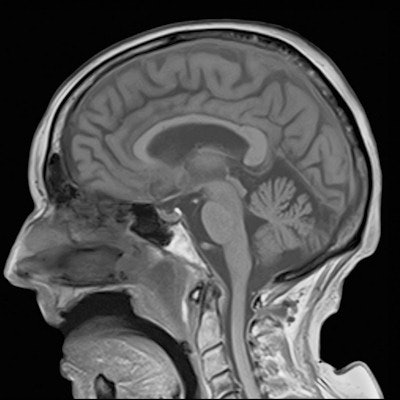
Researchers from the U.K. (University College London) and Germany (German Center for Neurodegenerative Diseases [DZNE], Magdeburg; Max Planck Institute, Leipzig; and Ruhr University, Bochum) have used ultrahigh-field functional MRI (fMRI) to produce a precise topographic map of the representation of touch in area 3b of the somatosensory cortex -- a region thought to only respond to mechanical stimulation.
Precise tactile activity maps are created in the somatosensory cortex when viewing someone else's fingers being touched, according to lead author Esther Kuehn, PhD, and colleagues. Furthermore, they found such "foreign source" maps are consistent with maps produced following actual tactile stimulation: They overlapped in the same areas, albeit they were weaker in fMRI signal amplitude.
 Esther Kuehn, PhD.
Esther Kuehn, PhD.This research delves deeper into the multisensory properties of different cortices, and may have implications for studies of cortical plasticity -- the brain's ability to reorganize in response to trauma or learning (Journal of Neuroscience, 4 January 2018).
Previous studies have shown that sensory cortices in the brain can receive inputs from other sensory systems, for example visual activity in response to sound or touch. It is unknown, however, to what degree, and to what specificity, these foreign sources activate sensory cortices.
The auditory, somatosensory (tactile), and visual cortices have detailed spatial organization. For instance, subregions of the somatosensory cortex that respond to finger touch lie next to each other in a neat pattern. Here, the researchers employed ultrahigh-resolution (7-tesla) fMRI to investigate whether area 3b responds when a subject observes someone else's fingers being touched, and if so, whether there is specific finger organization.
Observing touch
The fMRI procedures involved two visual sessions and one tactile session. In the visual session, participants viewed someone else's fingers being touched in a "phase encoded" design (stimulation of consecutive fingers) in a first-person perspective. The phase angle of the response was used to visualize the finger being stroked, producing "finger-phase" maps.
The visual experiment was repeated using a blocked design, in a third-person perspective; this was used to see whether visually driven maps were only produced after observing "self-referenced" touch (first person), and whether the maps were robust across fMRI design/analysis. In the tactile sessions, the participant's fingers were stimulated by sandpaper, in both phase-encoded and block design, separately.
Additionally, a separate group of participants underwent electromyography (EMG) to measure the small electrical currents produced following muscle movement. The researchers performed this experiment to verify whether the maps produced while observing touch were confounded by involuntary finger movements. They found that observing touch did not trigger muscle activity.
Driven by vision
As expected, the results showed that individual finger representations were arranged in a topographic manner following tactile stimulation. Similar but weaker maps were also produced during the visual sessions when the subject only observed the fingers being touched. These maps were present in area 3b of the somatosensory cortex.
The researchers calculated the overlap of the observed touch maps with the tactile maps by measuring the similarity of phase angles. They observed full overlap with no significant shifts in position or distortions at the group level, even though shifts or distortions could occur in individual participants.
The observation of touch in the third-person perspective produced a weaker correspondence between the visual-driven and tactile maps. The authors suggest this can be explained by the 180° rotation of the subject with respect to the visualized fingers.
In a control condition, where participants viewed a finger that was approached by a sandpaper stimulus but not actually touched by it, there was no topographic correspondence between visual and tactile maps. Thus, in addition to the finding that weak but topographically precise visually driven maps could be produced, the researchers also found these maps only existed if there was actual touch in the observation.
Tactile and versatile
This study suggests a novel mechanism for cortical plasticity. If one assumes there is already a foreign source map present in sensory cortices, this implies that rather than attributing plasticity to substitution or invasion of foreign afferent connections, the process may be modulatory. This research explores the controversial multisensory components of area 3b by showing how it can encode observed touch as well as real touch, and raises questions regarding existing theories on cortical plasticity.
Michael Asghar is a doctoral student contributor to medicalphysicsweb, working in the Sir Peter Mansfield Imaging Centre at the University of Nottingham, U.K. He is working on mapping human somatosensory responses with ultra-high field fMRI, using novel paradigms and modeling techniques.
© IOP Publishing Limited. Republished with permission from medicalphysicsweb, a community website covering fundamental research and emerging technologies in medical imaging and radiation therapy.



















